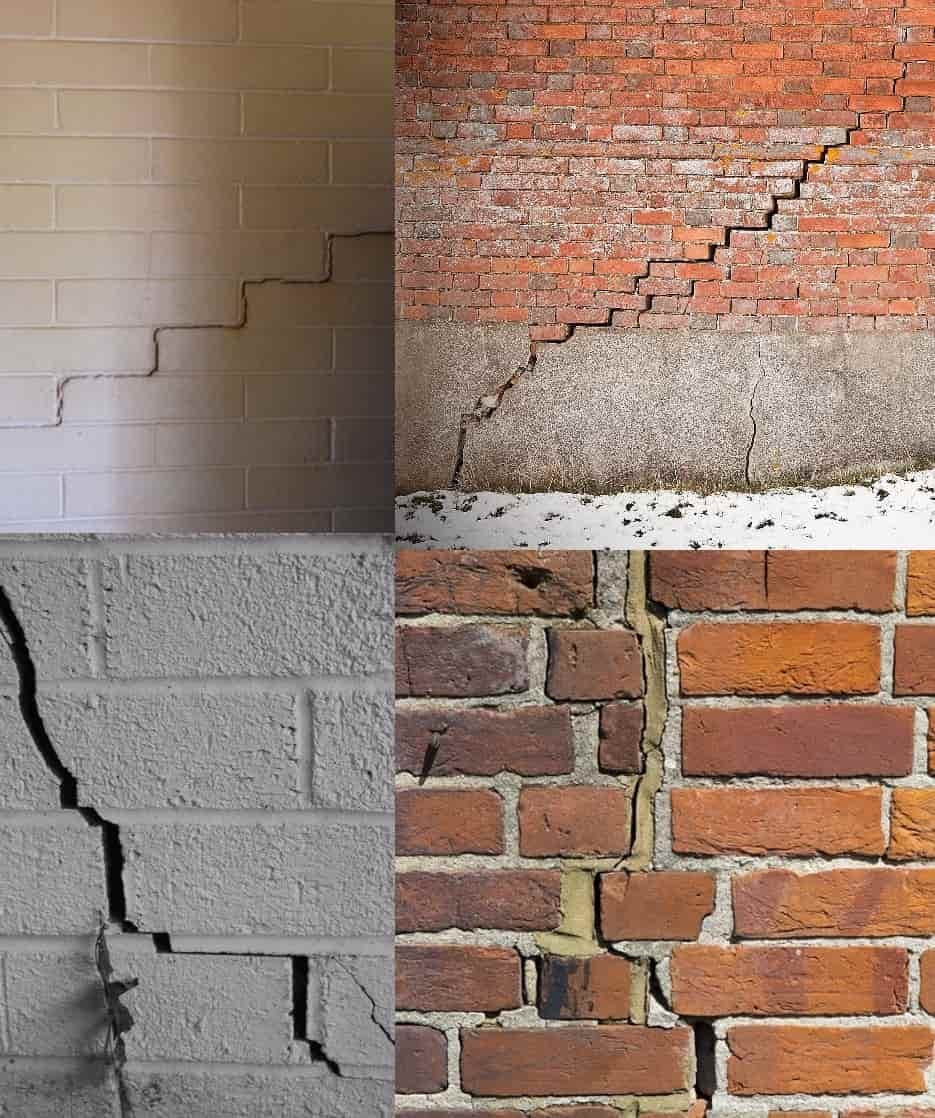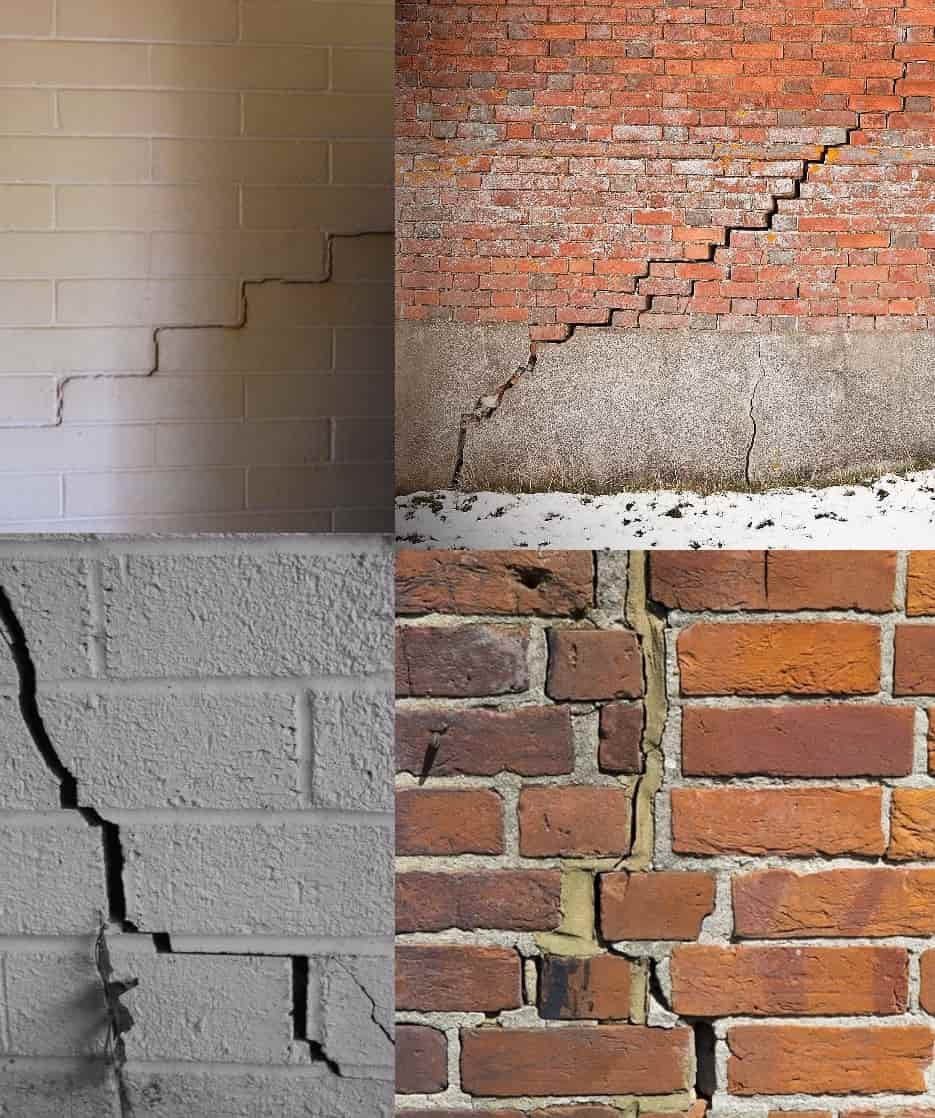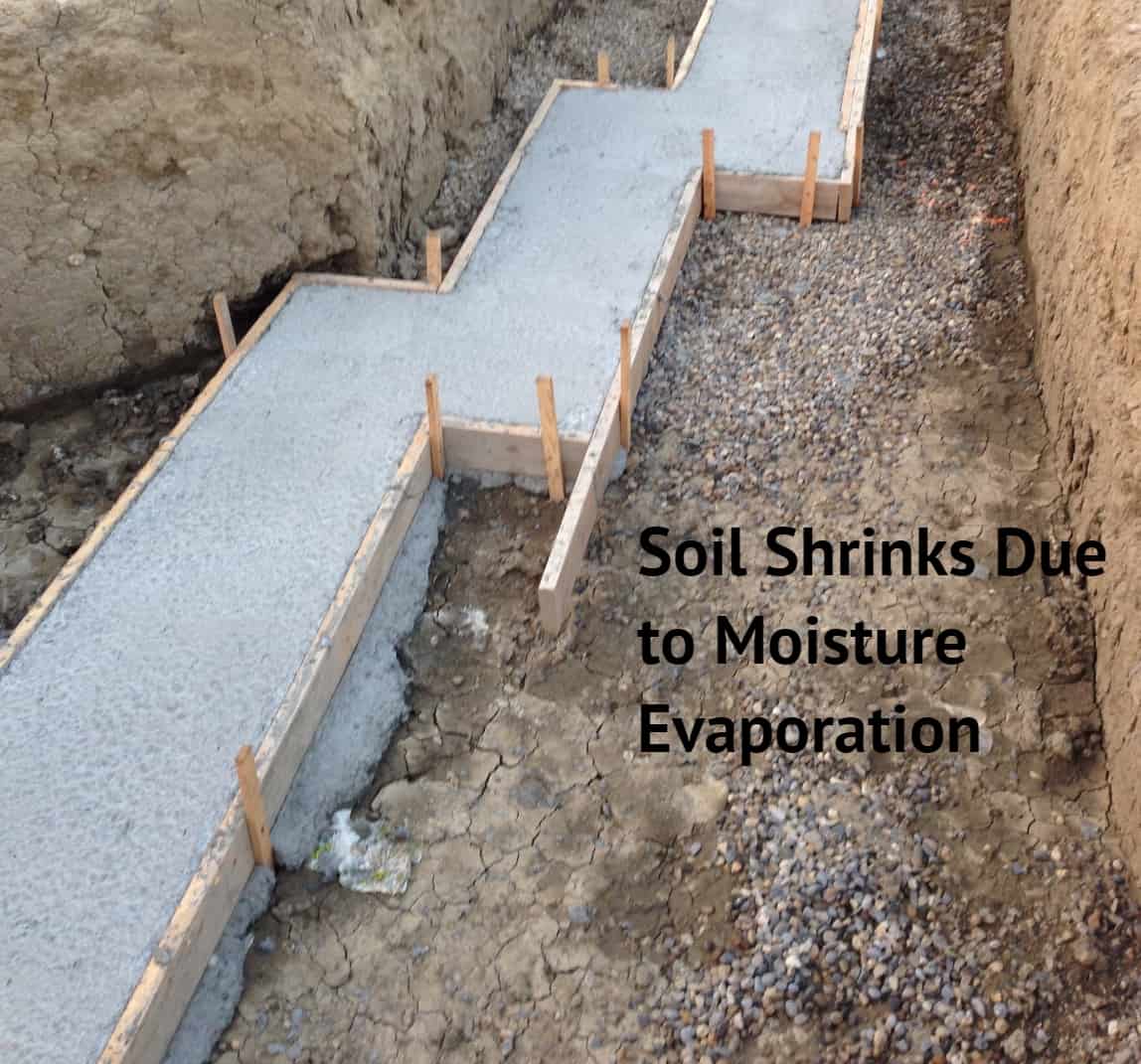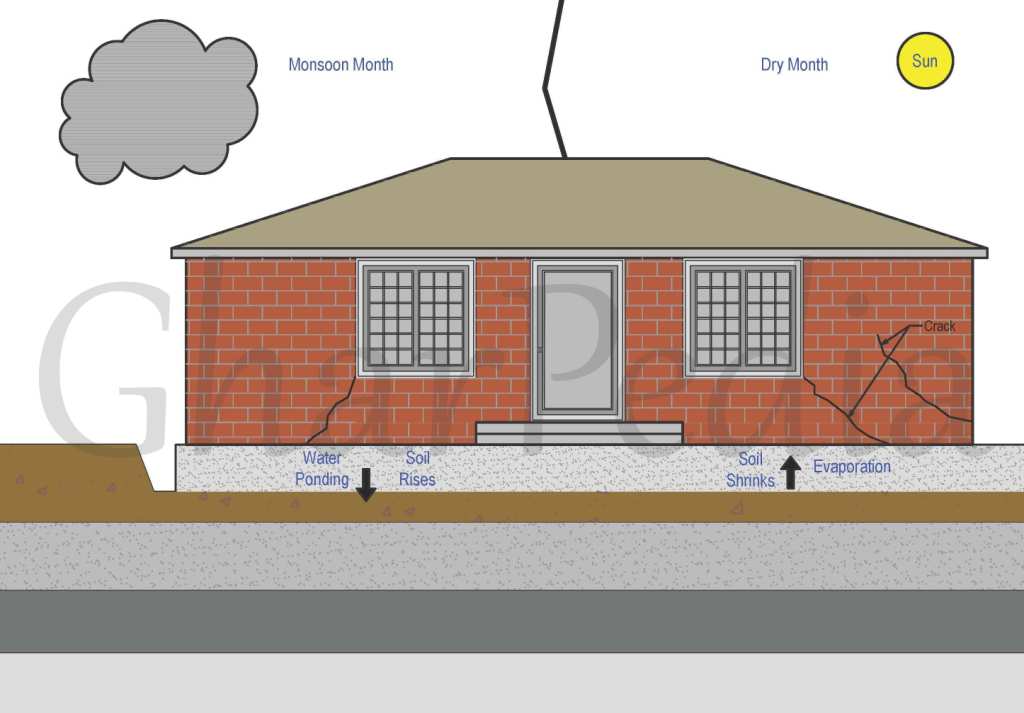
Foundation of the home is like the legs of the human body. When legs are not proper or working poorly in the human body, the human body fails to perform efficiently. In the same way, when the foundation of the house is not proper, the house also acts poorly. The future performance of any house mainly depends on their strong foundation. The movements of the foundation disturbs the stability of house, and hence develops the foundation cracks which ultimately decrease the performance of the house.

Vertical cracks and horizontal cracks found in foundation wall or basement walls are the basic types of foundation cracks. Stair step cracks and diagonal cracks are also types of foundation cracks and they can appear on the exterior wall above the ground level.

The horizontal cracks in basement walls are the most severe types of cracks. They are usually observed in the USA, especially where most of the house are built with the basement.
We have already discussed the signs of foundation problems. This article will help to decide, whether your foundation is in good or bad condition.
If the causes of the foundation cracks are not understood properly at an early stage, it can cost you a lot in future and may lend you in problem.
Here are the causes of the foundation cracks which needs to be understood properly to reduce the high maintenance cost of the home.
Causes of Foundation Cracks:
Cracks develop due to the failure of the foundation of the house and it is a sign of failure. The foundation of the house is affected by many factors which may lead to the foundation cracks. Following are the causes of failure of foundation which leads to the foundation cracks.
(a) How Dry Spell (Dry Period) Cause the Foundation Cracks?

In dry spell (summer season), moisture gets evaporated from the ground, and the soil shrinks. Soil will get pulled away from the foundations. When the soil shifts away, it creates a gap below or near to the foundation. Hence if the foundation is not supported properly, cracks will start to appear due to the failure of foundation as the support is gone or has become weak. Hence the foundation must be laid at a level where the movements due to moisture cease or the crack cease.
(b) How the Clay Soil or Expansive Soil or Black Cotton Soil Cause the Foundation Cracks?

Topography and soil condition (types of soil) also makes a huge difference as far as the behaviour of the foundation is concerned. Foundation resting on clay soil will reduce the stability of the house. The clay soil has an expansive nature like black cotton soil. It will expand when there is too much water and shrink heavily on drying. The expansion of clay soil thus causes the upheaval which is opposite of settlement process. Hence soil pushes the foundation up and ultimately create cracks in walls, flooring, etc.
Furthermore, when the soil dries out, it will shrink and make space for movement of the foundation. Such soil exerts huge pressure while swelling and shrinking, thus making supporting soil unstable. This movement causes the failure of foundation and hence cracks start to appear.
Where to Lay Foundation?
It is advisable that the foundation must be laid to a level where the crack ceases and of course as per the geotechnical report of soil. Hence foundation should be positioned either in total water logged soil or totally dry soil, but not at a layer which undergoes alternate wetting or drying due to seasonal changes over the year.
(c) How the Consolidation of Soil Cause the Foundation Cracks?

Sometimes clay soil consolidates when it dries out. Soil consolidation is the process in which reduction in soil volume takes place by displacement of water under long term static loads. Furthermore, bulk volume of the soil is reduced, when the load is applied to soil. Hence cracks in walls appear due to the settlement of soil from the foundation.
(d) How the Poor Practice of Design and Construction Cause the Foundation Cracks?
It is necessary to test your soil and design the appropriate footings to increase the stability of foundation. It is also needed to compact the sub grade soil of the foundation up to the required level otherwise the settlement of the soil will occur. The cracks develop if these factors are not considered at the time of design and execution.
Provide adequate soil compaction to the base of the foundation. It is done by determining the density of the soil and comparing it to the maximum density (MDD) determined by a laboratory test.
(e) How the Surface Water Drainage Cause the Foundation Cracks?

It is necessary to protect your foundation from the staggered surface water like rain water or snow melt water or flooding water. Sometimes the surface water gets stagnant in the periphery of the house due to the lower level of the plinth. Furthermore, sometimes the slope of landscape soil is not provided properly and ultimately creates the problem of the foundation settlement, which causes the cracks in walls.
Due to retention of water, it will percolate beneath causing swelling/shrinkage or drying/wetting of soil, resulting in cracks.
Sometimes plumbing leakages, poor grading or inadequate drainage also leads to settlement problem. When the soil is wet, it expands and pushes the foundation of house due to hydrostatic pressure. Ultimately you notice the leaks, cracks and bowed foundation when the pressure is too much.
(f) How the Extension of Home Cause Foundation Cracks?
When you carry out the vertical extension of the existing house without checking the capacity of existing foundations, the cracks appear due to the settlement of the foundation as the load of extension will cause the settlement.
Similarly during horizontal extension, if proper connections are not done, there would be different consolidation and settlement of both new and old structure causing cracks. Please note that the old structure has already undergone consolidation, while the new one has not, hence for the new horizontal extension, you need to take care while designing the foundation. The different rate of the settlement will cause cracks all along the walls, floors, etc.
(g) How the Trees Around Home Cause Foundation Cracks?

Large trees growing next to your home can also be the reason of foundation cracks due to the failure of foundation. When foundation soil is a shrinkable clay, diagonal cracks can occur due to dehydration action of growing roots of large trees. Dehydration action of the growing roots causes the soil to shrink.
Furthermore, when the old trees are cut off and the soil that had been dehydrated earlier by roots, will swell up when gets moisture due to rain, diagonal cracks will appear due to upward thrust created by the growing roots on a portion of the foundation of the building.
(h) How the Natural Disasters Cause the Foundation Cracks?
Sometimes natural disaster like earthquakes, hurricanes and storms lead to the foundation problems. The earthquake force, wind force and water pressure produce movements in the foundation of the house and hence develop the foundation cracks. In case of an earthquake, the foundation generally fails due to a phenomenon called “Liquefaction”. Further foundation along streams, river, reclaimed soils may fail due to sliding. Sometimes due to lateral pressure, it may overturn and fail.
It is advisable that if you notice a foundation cracks or any other foundation problems then you must have to visit Nearby structural engineer consultant or companies such as Ramco, Ram Jack, Abacus, Permapier, etc. who have a sound engineering knowledge and vast experience of foundation repair.
In conclusion, There are many reasons for developments of the cracks in the house. But foundation cracks appearing due to the failure of foundation indicates that there are problems in the foundation of the house. Hence, it is must to take preventive measures to stop the failure of foundation as the cost of foundation repairs are very high and the rebuilding or strengthening foundation is also an uphill task not possible generally for a common man.
Also Read:
Investigation & Repairing of Cracks in Brickwork
Crack Repairing Techniques for Concrete Structures






























